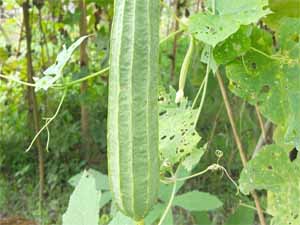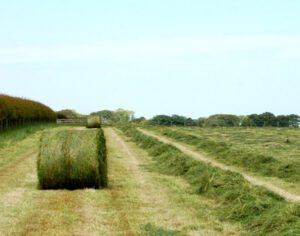Potato farming is very common and popular throughout the world. Potatoes are actually the most common and are relatively inexpensive to purchase from any market.
Potato is the most important food crop of the world. It is an economical crop and referred as Poor man’s friend. Origin of the potatoes is in South America. Potatoes are actually used in many ways. But it is mainly used as vegetable and also used for making chips and other food items.
It is also used for several industrial purposes for production of starch. Today, potatoes are very common throughout the world and is grown in almost all areas around the world.
Commercial potato farming is very easy and simple. Even the beginners can also start growing potatoes for making profits. Here in this guide, we are trying to describe more about potato farming techniques, planting, caring, harvesting and many tips and ideas.
How to Start Potato Farming Business?
Potato farming is very easy and simple. You can start this business and make good profits, even if you are a beginner. Potatoes can be grown in different types of fertile soil.

You can start commercial potato farming business if you follow this guide carefully. Here we are trying to describe more about planting, caring and harvesting potatoes.
Step 1. Select a Good Location
First of all, you have to select a very good location for starting potato farming business. The selected land must have to be well-drained and fertile. The potatoes can be grown on wide range of soil, ranging from sandy loam, silt loam, loam and clay soils.
The potato plants give best yield when grown under well drained sandy loam and medium loam soils with rich organic content.
The potato plants can be grown in acidic soil. But the plants can not be grown under waterlogged soil. Saline and alkaline soils are not suitable for potato farming.
Step 2. Prepare the Soil
Well pulverized bed should be prepared for commercial potato cultivation. You can do so by ploughing the land once up to 20 to 25 cm deep. Take two or three harrowing after ploughing operation.
Level the soil by planking operation for one or two times. And maintain sufficient moisture in the soil before sowing. Ridge and furrow method, and flat bed methods are generally used for planting potatoes.
While preparing the soil, apply as much organic fertilizer as you can. Chemical fertilizers are also essential along with organic fertilizer for maximum growth.
For optimum growth and good production, the plants will require Nitrogen@75 kg per acre in form of Urea@165 kg/acre, Phosphorus@25 kg/acre in form of SSP@155 kg/acre and Potash@25 kg/acre in form of MOP@40 kg/acre.[1]
Step 3. Climate Requirement for Potato Farming
It is essential to plant the potatoes at an optimum time for ensuring high yields. The potato plants can’t tolerate high temperature. The plants generally require cool climate for growing.
Step 4. Best Time for Potato Cultivation
Potato plants grow well in cool weather. You can start planting 1-2 weeks after last spring frost, if you live in the northern areas. The best time for planting potato is when the maximum and minimum temperatures are from 30°C to 32°C and 18°C to 20°C respectively.
Step 5. Choose a Variety
There are about 4,000 varieties of potatoes available throughout the world. And among these varieties, there are some varieties available which has specific agricultural or culinary attributes.
The potato varieties are generally categorized into some groups based on their common characteristics such as purples, yellows, whites and reds.
Among the many different potato varieties, the red potatoes and the oval baking potatoes have dominated the market. Taste and the texture of different potato varieties are vary different from each variety to another.
You should choose the variety which grows well in your area. You can consult with an expert in your area for choosing the right variety for your business.
Some popular potato varieties for commercial cultivation are Katahdin, Kennebec, Elba, Irish Cobbler, Norland, Mountain Rose, Viking, Blue, Red Pontiac and Chieftan.
Step 6. Purchase Seeds/Potatoes
The seed potatoes are actually not seeds at all. The seed potatoes are full-size regular potatoes which are allowed to start producing shoots from the potato eyes. Probably, you have already seen such potatoes when you store some potatoes in the kitchen for too long.
You can easily purchase seed potatoes from the market for starting your potato farming business. You can purchase the seed potatoes from stores or you can also order online.
Step 7. Seeds Per Acre
Use seed rate of 800-1000 kg/acre for small size tuber, 1000-1200 kg/acre for medium size and 1200-1800 kg/acre for large size tubers. Use whole seeds for disease free quality seed production.
Step 8. Planting
Plant the seeds in your land which is already prepared for potato cultivation. Exact planting time is very important for having maximum production. Best time for planting potatoes is when the maximum and minimum temperatures are from 30°C to 32°C and 18°C to 20°C respectively.

For early season crop in India, complete sowing from 25th September to 10th October, Sowing should be done in first week of October to third week of October, for medium duration crop. And for long duration crop, complete sowing from third week of October to first week of November. And for spring season, second fornight of January is best time for planting.
Spacing: For planting, use distance of 20 cm between tubers and 60 cm between ridges manually or mechanically. Planting distance vary with size of tubers. If diameter of tuber ranges from 2.5-3.5 cm, use planting distance of 60×15 cm where as if diameter of tuber is of 5-6 cm, use spacing of 60×40 cm.
Planting Depth: Dig a trench of 6-8 inch deep and plant 1 piece of potato with eye pointing up.
Planting Method: Use tractor operated semi-automatic or automatic planter for sowing.
Step 9. Caring
After planting, potato plants require additional caring for better growth and maximum yield. So, taking additional care of the plants is a must for good growth of the plants and maximum production. Here we are shortly describing about the caring process for potato farming.
Fertilizing
Apply 3/4th of nitrogen fertilizer and whole dose of phosphorus and potash at time of sowing. Remaining 1/4th dose of nitrogen should be applied after 30-40 days after planting at time of earthing up operation.
In case of light soil apply half dose of nitrogen and full dose of P and K at time of sowing and remaining half should be apply as top dressing in two time in equal splits at time of earthing up operation.
Watering
Timely and proper watering is very important for commercial potato farming business. Depending upon soil moisture, irrigate the field immediately or 2-3 days after planting.
Light and frequent irrigation gives best result. But avoid flood irrigation as it will cause rot disease. For medium to heavy soils, three to four irrigation is required whereas for sandy soils, 8-12 irrigation are necessary.
Second irrigation should be done within 30-35days after planting depending on soil moisture. Remaining irrigation should be given as per requirement of soil and crop need. Stop irrigation 10-12days before harvesting.
Mulching
Mulching is very helpful for retaining moisture in the soil and also for controlling weeds from the soil. Use organic mulch between the rows after the potato plants have emerged.
Controlling Weeds
Weeds are very harful for the potato plants. They will consume nutrients from the soil. For commercial production, apply Metribuzin 70WP@200gm per acre or Alachlor@2 ltr per Acre before sprouts emergence.
Remove weeds with hand in case of low infestation 25days after planting in plain areas and 40-45days in hilly areas when crop attained height of 8-10cm. Usually weedicide in potato plant are not required as earthing up operation destroyed almost all weeds.
Step 10. Pests and Diseases
The potato plants are highly susceptible to some pests and diseases. You can apply both organic and chemical methods for controlling diseases and pests.
Diseases
Late blight is a common disease in the potato plants which causes the foliage turning black, and then moldy. Dispose or burn the foliage for controlling this disease.
Using certified disease-resistant seed potatoes can also help for preventing this disease. Another common disease of the potato plant is scab.
This disease causes the plant to look like raised, corky areas on the skin or sunken holes on the surface. A low level of soil pH can help for controlling this disease.
Pests
Aphids and beetles are the most common pests of the potato plants. Check your plants regularly and use organic pesticides if you notice any aphids or beetles.
The thin, red wire worms also attack the potato underground. Crop rotation can help for preventing this pest.
Step 11. Harvesting
It is necessary to get virus free seed also it increases size and number of tubers. Dehaulming means cutting of foliage close to ground at fix timing or date. Its timing is varying according to region and also on aphid population. In north it is carried out in last week of December.
The crop is ready for harvesting when majority of the leaves turn yellow-brown and fall on ground. Harvest crop 15 to 20 days after dehaulming at proper moisture in soil.

You can harvest potatoes by tractor drawn potato digger or manually with help of spade. The potatoes are spread on ground after harvesting, and allowed to dry in shade.
Post Harvesting Tasks
Do sorting of tubers and remove cut, injured tubers. And after sorting, grading is done depending upon diameter or size of tubers.
Over size tubers have great demand and value in the market, and they are very useful for chips making. Store the potatoes at temperature of 4°C to 7°C and relative humidity.
Yield
The yield of potato actually depends on many factors. Exact amount vary depending on variety, season and many other factors. The average yield of potato in India is about 20 to 30 ton per hectare.
Step 12. Marketing
Potatoes have very good demand and value throughout the world. So, you don’t have to worry much about marketing your products. You will probably be able to sell your products easily in the local market.
That’s all about commercial potato farming business. Hope this guide has helped you! Leave your opinion or ask your question below. Good luck and may God bless you!







Thanks for sharing such educative information. I will endeavor to put into practice your advice.